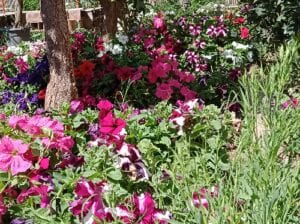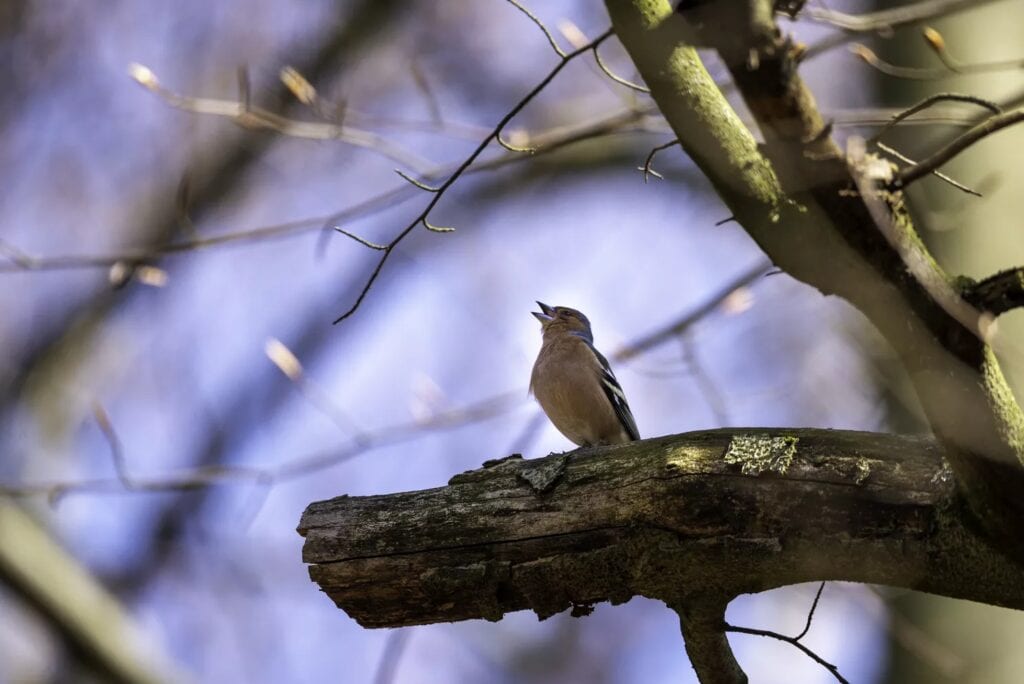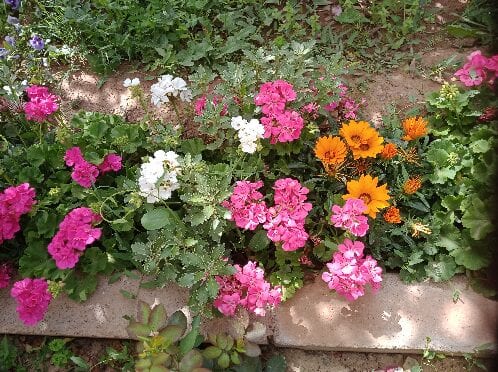Rosemary in the garden appeals to the eyes, nose, and hands. A garden that appeals to all the senses helps one feel fully immersed in the natural world.
A successful sensory garden is one that caters to all of the senses. Beyond just looking beautiful, it works to create a holistic space for the eyes, ears, nose, skin, and mouth. Engaging all of the senses in a garden is a wonderful way to help you relax and feel fully immersed in the natural world.
Create a Lush Haven With Dense Planting

The first thing when creating a sensory garden is that it should feel like a world apart. It should be a space that, in a way, makes the outside world – and its distractions – disappear. This sense of separation can help a garden become more immersive. A place where you can be mindful, melt into a moment and truly be at peace.
Dense, layered planting – particularly around the periphery of your garden – can help make it feel like a more enclosed and nurturing space. Pay particular attention to the boundary of a garden closest to roads, or where your garden can be seen by neighbors.
Dense border planting need not make a garden feel smaller or more confining. Consider “borrowing” from the surroundings and making plant choices that blur the boundaries; a thick and lush hedgerow or border can make your garden feel part of the surrounding landscape – and make it feel larger and more expansive overall.
Combine Colors for Different Effects
It is possible to create a wide range of different visual effects in a garden simply through the plant choices you make. The color palette you opt for in your garden will play an important role in determining the overall feel and mood of the space.
Limiting the color palette by choosing flowering plants with a more limited range of hues can help make a space feel calmer and more relaxing. A green and white garden, for example, can be a very soothing space. While if you include a riot of color, a garden can often be cheerful and have an energizing effect.
Consider the Soundscape

Visual appeal is not the only element to a sensory garden – you should also consider the soundscape. The sounds around you in the space can also be very important in creating mood and allowing you to feel close to nature.
First of all, consider how the wind moves through trees and other plants, rustling the leaves and creating a background noise of susurration. Of course, birdsong will often be another very important element in the soundscape of a garden. And don’t forget the buzz and calls of insects. Make sure you are providing plenty of habitat for wildlife so that they can provide a soundtrack.
Another way to add to these natural background noises is with running water. Adding a water feature to a garden pond, or even creating a babbling brook through your space is a great way to create a calmer mood.
Wind chimes, rain chains, and other such features can also add different elements to complement the natural sounds of your surroundings.
Fill the Air With Scent

When you choose plants for your garden, fragrance is another very important thing to consider in a sensory garden.
Consider especially carefully the plants with fragrance that you might place closest to your home, and to outdoor seating areas. And consider placing fragrant plants along pathways and even between paving so they release their scent when trampled or brushed against.
Lavender, roses, lilac, jasmine, and a wide range of aromatic herbs like thyme, rosemary, lemon balm, mints, etc. are all wonderful plants to include in a sensory garden – to give just a few examples. Just remember to choose all plants with the climate and specific location in mind.
Create Tactile Zones
Touch is a sense that we do often don’t think much about in a garden. But creating tactile zones is a wonderful way to make sure that you really engage with the natural world around you.
Grasses to brush past as you make your way along a pathway, a wild lawn area where you can take off your shoes and feel grounded, nubby tree bark that wants to be touched, and tactile plants like lamb’s ears, mullein, etc. close to a seating area can all be wonderful ideas for a sensory garden.
Get Your Taste Buds Tingling
Finally, being able to graze as you go is another great way to make sure you feel fully immersed in a sensory garden. Pop sweet strawberries or other soft fruits in your mouth as you pass by. Graze on fresh salad leaves, or peas straight from the pod. Or nibble on a peppery nasturtium. Grow a variety of interesting edible crops in your garden and there will always be something to tickle your taste buds.

(Source article: treehugger.com; March 3, 2021; https://tinyurl.com/5cjxmnfa)





